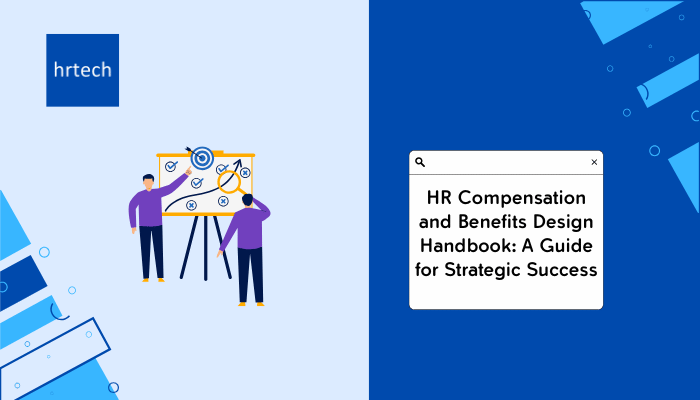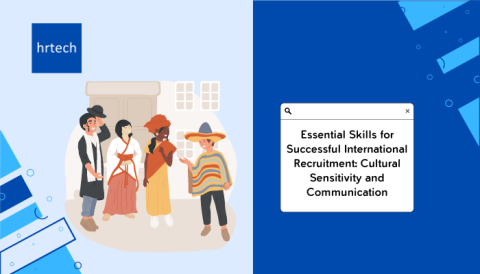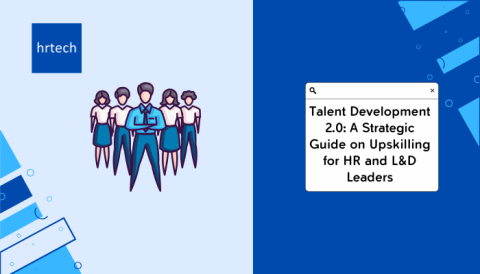Compensation and benefits design is one of the most impactful tools in a company’s arsenal for attracting, engaging, and retaining top talent. Today, employees expect more than just a paycheck; they want fair, transparent pay, robust benefits, and non-monetary perks that recognize their contributions and support their well-being.
For HR professionals, developing a well-rounded compensation strategy is crucial, especially as companies across industries compete for skilled talent. This HR compensation book pdf offers a comprehensive guide to crafting compensation and benefits plans that go beyond the basics to meet evolving employee needs.
This HR compensation book pdf builds upon these principles, offering actionable insights and advanced strategies for structuring compensation plans that fit today’s dynamic workforce. With detailed guidance on pay scales, benefit structures, and non-monetary rewards, this handbook aims to equip HR professionals with the tools needed to create compensation strategies that resonate with employees while supporting long-term business goals.
Whether you’re refining an established compensation plan or building one from scratch, this guide covers the essentials and advanced techniques, helping you build a rewards system that enhances both recruitment and retention efforts.
An understanding of compensation
Compensation is more than just a salary, it’s the entire range of direct financial rewards that employees receive in exchange for their work. This includes base salaries, bonuses, commissions, and other performance-based rewards. A well-structured compensation plan is essential, as it directly impacts recruitment, retention, and employee satisfaction.
When employees feel fairly compensated, they are more likely to stay engaged and loyal to the company. For HR professionals, understanding the different components of compensation and aligning them with both company goals and market standards is key to crafting a successful compensation strategy.
In addition to understanding these core elements, it’s also important to consider tools and resources that support strategic decision-making in talent acquisition and compensation planning. Explore more on building an efficient strategy with cutting-edge tools like generative AI in talent acquisition by clicking here.
Below is a table summarizing the core components of compensation:
| Component | Description | Purpose |
| Base Salary | Fixed payment provided to employees regularly, reflecting their role, responsibilities, and experience. | Ensures financial stability and provides a foundation for other rewards. |
| Bonuses | Additional financial rewards based on individual, team, or company performance, typically awarded annually or quarterly. | Motivates employees to achieve specific targets, boosting productivity. |
| Commissions | Variable compensation, usually given to sales roles, directly tied to the achievement of specific sales targets or quotas. | Provides incentive for employees in sales roles to exceed goals and drive revenue growth. |
| Incentive Pay | Financial reward for meeting or exceeding key performance indicators (KPIs), often structured around project milestones or company goals. | Encourages high performance and rewards employees who go above and beyond. |
| Profit Sharing | A share of company profits distributed to employees, typically calculated as a percentage of salary or a set amount. | Aligns employee interests with company success, encouraging loyalty and ownership. |
Key Benefits of a Structured Compensation Plan

A well-defined and thoughtfully structured compensation plan serves multiple functions, making it a critical asset for any organization’s HR strategy. Below are some of the most significant benefits:
1. Attract Top Talent
Competitive salaries and benefits are often deciding factors for candidates comparing job offers. A clear and attractive compensation package signals that a company values its employees and is willing to invest in them. In competitive industries, where specialized skills are in high demand, a well-defined compensation plan can set an organization apart and help secure the best talent.
2. Retain Valuable Employees
Employee retention is essential for reducing turnover costs and maintaining a stable, experienced workforce. Fair and transparent compensation improves job satisfaction, making employees feel valued and appreciated.
By offering rewards that grow with tenure and performance, companies can encourage employees to stay long-term, reducing the disruption and expense of frequent hiring.
3. Boost Motivation and Productivity
Performance-based rewards like bonuses, commissions, and incentives are effective tools for encouraging employees to exceed expectations. When employees know they can earn additional rewards by achieving specific targets, they are more likely to focus on productivity and quality. A motivated workforce not only meets but often exceeds goals, driving company growth and success.
4. Enhance Employee Engagement
A comprehensive compensation plan that includes elements such as profit sharing or stock options fosters a sense of ownership and belonging. Employees who feel they have a stake in the company’s success are more engaged, likely to contribute proactively, and invested in the long-term goals of the organization.
5. Align with Company Objectives
Structured compensation plans enable companies to align rewards with strategic objectives. For example, if a company is focused on growth, it might prioritize commissions and bonuses for its sales team. Conversely, a tech company focused on innovation might provide incentives for research and development. Aligning compensation with goals ensures that employees’ efforts support the broader company vision.
6. Support Compliance with Labour Laws
Labour laws mandate certain compensation standards, such as minimum wage and overtime pay. A well-structured plan that includes compliance considerations helps companies avoid costly legal issues. By ensuring that all elements of compensation align with legal requirements, organizations can focus on growth rather than managing regulatory risks.
Key Components of Compensation

Every effective HR compensation plan includes a mix of fixed and variable pay, along with additional benefits that address diverse employee needs. Let’s explore these key components in detail.
Base Salary
The base salary forms the foundation of any compensation plan. It is the regular payment made to employees, reflecting their role, responsibilities, and expertise.
A competitive base salary can attract skilled professionals, especially in high-demand roles. Companies can leverage tools like pay benchmarking to align their salaries with market rates, ensuring they remain competitive.
Incentives, Commissions, and Bonuses
Incentives and bonuses reward employees for performance, helping to drive productivity and organizational results. A study by McKinsey found that companies using incentive-based pay systems report a 15% boost in productivity. In sales roles, commissions often constitute a significant portion of total compensation, directly linking financial rewards to performance.
Performance-based bonuses are typically tied to individual, team, or company goals, providing motivation for employees to exceed their targets. These can range from annual performance bonuses to spot rewards for exceptional achievements.
Benefits
Benefits are a significant part of any HR compensation book pdf and include non-monetary rewards that enhance employees’ lives beyond work. Common benefits include health insurance, retirement plans, and paid leave. A comprehensive benefits package can improve employee satisfaction and well-being, contributing to a positive workplace culture.
The Design of a Compensation Strategy
Designing an effective compensation strategy involves balancing internal fairness with external competitiveness. A strategic HR compensation book pdf approach considers industry standards, role-specific demands, and employee expectations.
Internal Equity vs. External Competitiveness
Internal equity is essential for fostering a fair and cohesive work environment, ensuring employees with similar roles and responsibilities are compensated equitably within the organization. When employees feel their pay is fair compared to colleagues in similar roles, they are more engaged and motivated.
In fact, a Mercer study found that 60% of employees reported higher engagement when they perceived their pay as fair relative to peers. At the same time, external competitiveness ensures that a company’s compensation aligns with market standards, helping attract skilled professionals who might otherwise seek employment with competitors offering better pay.
Internal Equity:
- Promotes fair pay across similar roles within the organization.
- Increases employee engagement and satisfaction through perceived fairness.
- Reduces pay discrepancies and supports a transparent compensation culture.
- Ensures consistent rewards based on role rather than other variables.
External Competitiveness:
- Aligns company compensation with industry and market standards.
- Attracts and retains skilled professionals by offering competitive pay.
- Positions the company as an employer of choice in the market.
- Balances internal fairness with the need to remain attractive to top talent.
Job Analysis and Evaluation
Job analysis and evaluation are fundamental to understanding the responsibilities and expectations associated with each role within an organization. A thorough job analysis breaks down a position into specific requirements, such as skills, experience, and tasks. Meanwhile, job evaluation assesses the role’s relative importance or worth within the company, helping create fair and structured compensation tiers.
By using structured methods for job evaluation, companies can ensure that their compensation reflects each rule’s impact on the organization, supporting both fairness and strategic alignment.
Job Analysis:
- Breaks down each role into specific skills, tasks, and qualifications.
- Provides clarity on responsibilities and expectations for each position.
- Forms a foundation for assessing fair compensation and rewards.
- Supports HR in defining roles clearly, aiding in recruitment and training.
Job Evaluation:
- Determines the value or worth of each role within the company.
- Helps establish structured compensation tiers based on role impact.
- Ensures roles with similar responsibilities are rewarded equitably.
- Aligns compensation with organizational priorities and strategic goals.
Market Research and Benchmarking
Market research and benchmarking are essential steps in developing a competitive and sustainable compensation strategy. Benchmarking involves collecting and analyzing market data to understand salary ranges for various roles. HR professionals frequently use salary surveys, industry reports, and compensation databases to gauge their pay levels against similar roles in the market.
For example, a technology company might look at IT salary benchmarks to determine appropriate pay for software engineers. By continuously benchmarking, companies can maintain their competitiveness, ensuring they attract top talent while retaining their existing workforce.
Market Research:
- Involves gathering detailed salary data across relevant industries.
- Helps understand current pay rates and trends for various roles.
- Provides a basis for comparing internal pay with market standards.
- Ensures the organization remains up-to-date on industry compensation norms.
Benchmarking:
- Uses compensation databases and salary surveys for precise comparisons.
- Assists in setting pay levels that align with industry and market rates.
- Enables the company to offer competitive pay to attract top talent.
- Forms a solid foundation for developing an attractive compensation strategy.
Determining Salary and Monetary Compensation
Setting appropriate salary levels is critical to creating a fair and effective compensation strategy. Here are some key considerations for establishing salaries.
Factors Affecting Base Salary
Several factors influence base salary, including role complexity, required skills, market demand, and organizational budget. A high-demand role with scarce skills, such as data science or cybersecurity, will typically command a higher salary than roles with a broader talent pool.
Pay Grades and Ranges
Creating structured pay grades and ranges helps standardize salary levels across the organization. Each pay grade includes a minimum, midpoint, and maximum salary range, providing a clear structure for compensation progression. This approach not only ensures consistency but also gives employees a clear view of potential salary growth within the company.
Salary Structure and Bands
Salary bands within pay grades offer additional clarity for employees, defining the progression from entry-level to senior roles within each band. Establishing clear salary bands can boost motivation by providing a visible career path, showing employees where they stand and where they can progress.
Benefits for Employees
Employee benefits are a fundamental part of any robust compensation package, going far beyond monetary rewards to address employees’ quality of life, job satisfaction, and overall work-life balance.
By offering diverse benefits that cater to different needs, companies show their commitment to employee well-being, which is crucial for retention and engagement. This HR compensation book pdf dives into the types of benefits that enhance work environments and attract top talent.
Health Insurance
Health insurance is often viewed as a primary benefit, covering medical, dental, and vision care to alleviate employees’ financial burden when it comes to healthcare. In the U.S., where healthcare expenses are significant, companies offering comprehensive health insurance can set themselves apart in a competitive market.
According to recent studies, nearly 80% of U.S. employees rank health coverage as one of the top benefits they consider when evaluating job offers. Health insurance plays a critical role in employee security and well-being, contributing to overall job satisfaction.
Leave Policies and Time-Off
Adequate time-off policies, such as paid vacation, sick leave, and parental leave, are essential for maintaining a healthy work-life balance. In the U.S., many employers offer around 15 days of paid vacation, along with sick days and flexible leave options.
Companies that go above the minimum, providing extended parental leave or additional personal days, foster an environment where employees feel valued. These policies support employees’ mental and physical health by giving them time to recharge and manage personal obligations without the stress of work demands.
Wellness Programs
Wellness programs are designed to support employees’ physical, mental, and emotional health. These can include gym memberships, mental health resources, stress management workshops, and even on-site fitness facilities. Studies show that for every dollar spent on wellness programs, companies can see a return of $3 through enhanced productivity and reduced absenteeism.
Including wellness programs in an HR compensation book pdf demonstrates a proactive approach to employee health, highlighting the company’s investment in creating a balanced and sustainable work environment.
Flexible Work Arrangements
Flexible work arrangements have become increasingly important, especially with the rise of remote work. Offering employees options like flexible hours or the ability to work from home helps them better balance personal responsibilities and work demands.
In fact, a recent survey found that over 60% of American employees consider flexibility one of their top priorities when choosing a job. By allowing for such flexibility, companies can boost employee satisfaction and attract talent seeking a better work-life balance.
Educational and Professional Development
Professional development benefits, such as training programs, certifications, and tuition reimbursement, are essential for employees aiming to advance their careers. Companies that support learning and growth help employees feel invested in, which can increase job satisfaction and loyalty.
According to data, 94% of employees say they would stay with a company longer if it invested in their career development. Including these opportunities in the benefits package not only boosts retention but also fosters a culture of continuous improvement.
Childcare and Family Support
Child Care assistance, whether through on-site facilities or childcare allowances, as well as extended parental leave, can significantly ease the burden on working parents.
By providing family-oriented benefits, companies show that they understand and support employees’ responsibilities outside of work. This commitment can enhance loyalty, as employees are more likely to remain with a company that supports their family needs.
Commuting Benefits and Allowances
Commuting costs can be a considerable financial burden, particularly in metropolitan areas. Offering commuting benefits like parking stipends, transit reimbursements, or remote work options can help alleviate these expenses for employees. Such benefits not only reduce financial stress but also show that the company values employees’ convenience and time.
As an HR professional, designing a balanced benefits strategy is about more than just meeting market standards; it’s about showing employees that their well-being matters. A well-structured benefits approach, as highlighted in this HR compensation book pdf, can boost engagement, create a positive work culture, and contribute to the company’s long-term success.
For more insights on creating a forward-looking talent acquisition strategy with AI, read this comprehensive guide.
Non-Monetary Rewards
While monetary compensation is essential, non-monetary rewards play an equally important role in motivating and retaining employees. A well-rounded HR compensation book pdf covers non-monetary incentives, offering value that enhances employee engagement.
Recognition Programs
Recognition programmes acknowledge employee achievements, fostering a culture of appreciation. From formal awards to informal recognition platforms, these programs can improve job satisfaction. According to Gallup, companies with effective recognition programs see a 10% increase in productivity and a 20% reduction in absenteeism.
Flexible Working
Flexibility in work arrangements has become increasingly popular, with many professionals seeking remote or hybrid options. A survey by PwC revealed that 70% of employees consider flexible working important when evaluating job offers. By accommodating this preference, companies can increase job satisfaction and attract diverse talent pools.
Career Development Opportunities
Career development opportunities, such as training and mentorship, contribute to long-term employee engagement. A LinkedIn report found that 94% of employees would stay at a company longer if it invested in their career development. By offering continuous learning opportunities, companies can retain skilled professionals and foster a culture of growth.
Employee Resource Groups and Community Involvement
Employee Resource Groups (ERGs) and community engagement activities support inclusion and belonging. ERGs provide a platform for employees to connect around shared identities or interests, fostering a sense of belonging.
Additionally, community involvement initiatives allow employees to give back, enhancing their connection to the organization. Companies with active ERGs report higher employee engagement and satisfaction.
Conclusion
An effective HR compensation and benefits strategy is critical for building a motivated and productive workforce. By combining competitive salaries, comprehensive benefits, and non-monetary rewards, organizations can create a rewarding work environment that attracts and retains top talent.
As covered in this HR compensation book pdf, balancing monetary rewards with benefits and non-monetary incentives forms the foundation of a well-rounded compensation strategy. This comprehensive approach aligns employee satisfaction with organizational success, setting the stage for long-term growth. For further strategies on building a scalable and efficient talent acquisition approach, explore this guide on generative AI in recruitment.





